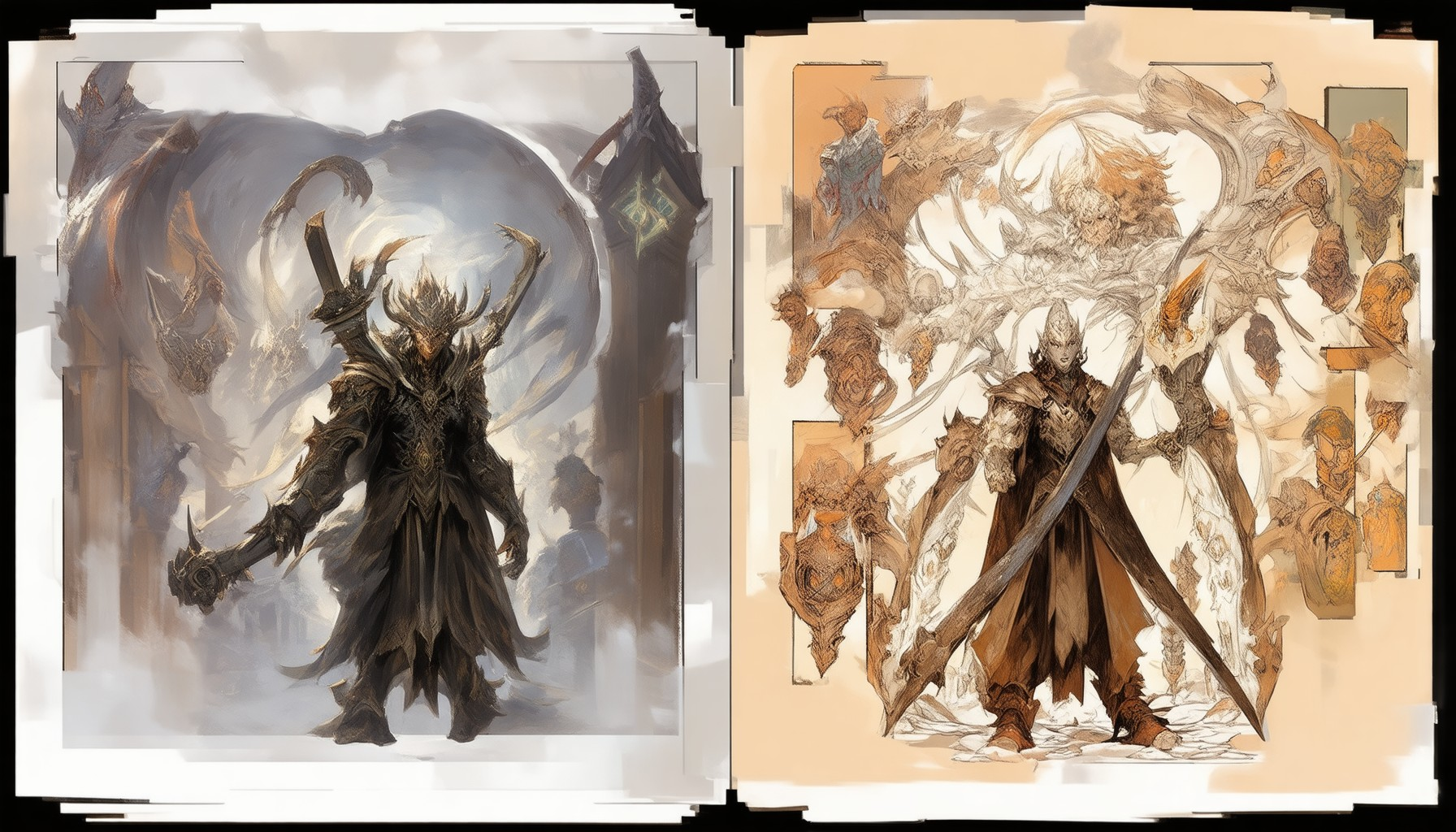Storytelling remains the cornerstone of captivating narratives, where the journey of characters often defines the success of a story. Among the most critical elements of any tale is the character arc—a transformative path that guides protagonists from their initial states to meaningful growth. A well-crafted character arc not only adds depth to a narrative but also ensures characters remain relatable and engaging throughout. Whether exploring the evolution of a hero, the descent of a antihero, or the redemption of a fallen figure, understanding the structure and dynamics of a character arc is essential for creating memorable and impactful stories. This guide delves into the intricacies of building character arcs, examining the various components that contribute to a compelling journey, from the inciting incident to the climax and resolution. By mastering these elements, writers can craft arcs that resonate with audiences, leaving a lasting impression long after the final page turns.
Key Takeaways
- Master the fundamentals of narrative arcs to elevate your storytelling: Understanding the key elements of narrative arcs is essential for creating engaging and emotionally resonant stories.
- Structure your story with the 5-part narrative arc: This traditional framework helps in developing characters, building tension, and delivering a satisfying plot progression.
- Grasp the evolution of story arcs with the 7-part structure: Learn how these phases guide the flow of events, ensuring a compelling and immersive narrative experience.
- Simplify your storytelling process with the 3 TS story arc: This streamlined framework offers a clear path for creating balanced and impactful narratives.
- Enhance character depth and plot resolution: By mastering these structures, you can craft characters with depth and conclude stories that leave a lasting impression.
- Maintain engagement through escalating tension: These arcs help in sustaining interest, managing conflict, and fostering emotional connections with your audience.
- Create memorable characters with proper structure: Understanding these arcs ensures your characters are relatable and your plots are cohesive.
- Achieve a fulfilling story conclusion: Proper use of these structures leads to resolutions that satisfy both characters and readers.

How to Build a Good Character Arc
Building a good character arc involves carefully crafting the journey of your protagonist, ensuring they grow, evolve, and remain relatable throughout the story. Here’s a step-by-step guide to creating an effective character arc:
1. Start with a Strong Foundation
Your character’s arc begins with their initial traits, flaws, and motivations. Define their personality, strengths, and weaknesses to establish a solid base. Consider their backstory, relationships, and personal goals to give depth to their character.
2. Introduce Conflict
Conflict is the catalyst for character growth. Introduce challenges, obstacles, or dilemmas that force your character to confront their beliefs, fears, and desires. This could be an external threat or an internal struggle that pushes them to act.
3. Push the Character Beyond Their Limits
To create a meaningful arc, your character must face situations that test their resolve and push them outside their comfort zone. This could involve physical danger, emotional turmoil, or moral dilemmas that force them to grow.
4. Show Growth Through Internal and External Challenges
Character growth happens when your protagonist faces both internal and external challenges. Internal challenges might involve self-doubt or fear, while external challenges could be adversaries or environmental obstacles. Address both to create a well-rounded arc.
5. Include Supporting Characters
Supporting characters play a crucial role in shaping your protagonist’s journey. They can provide perspective, challenge their views, and offer guidance. Use these interactions to reveal deeper layers of your character’s personality and motivations.
6. Pace the Story Thoughtfully
A well-paced story allows your character to develop naturally. Avoid rushing through their growth; instead, allow them to grapple with their emotions and experiences at their own pace. This builds realism and authenticity.
7. Confront the Limitations
Every character has limitations, whether they’re aware of them or not. Confronting these limitations is a pivotal moment in their arc. This could mean facing their past mistakes, accepting their imperfections, or understanding their boundaries.
8. Resolve and Transform
The resolution of your character’s arc should reflect their transformation. Show how they’ve integrated their experiences into their lives, moving forward with newfound wisdom, strength, or purpose. This closure should feel satisfying and authentic.
Final Thoughts
Building a good character arc takes time and careful planning. By focusing on your protagonist’s journey, conflicts, and growth, you can create a compelling and memorable story that resonates with readers. Remember, the best arcs are those that feel organic and deeply human.
How to Organize Character Arcs
To effectively organize a character arc, consider the following structured approach:
- Define Clear Goals : Establish a primary goal for your character. This goal can be internal (e.g., finding courage) or external (e.g., solving a mystery). Clear objectives provide direction for growth and development.
- Introduce Conflict : Introduce a significant challenge or conflict that forces the character to grow. This conflict should push the character beyond their comfort zone, propelling them toward evolution.
- Identify Themes : Align the character’s arc with overarching themes of the story. Themes provide a framework for the character’s growth, ensuring their journey resonates with the broader narrative.
- Understand Motivations : Examine the character’s internal motivations. Are they driven by fear, love, or ambition? Understanding these motivations adds depth and makes the character relatable.
- Show Growth Through Actions and Dialogue : Demonstrate the character’s growth through their actions and dialogue. Their behavior in challenging situations reveals their transformation.
- Leverage Supporting Characters : Utilize supporting characters to influence the protagonist’s journey. Antagonists, in particular, often serve as catalysts for growth by pushing the character to confront their fears.
- Pace the Journey Thoughtfully : Avoid rapid transformations. Gradual growth feels more natural and keeps the audience engaged, making the eventual change more impactful.
- Include Reflective Moments : Allow the character opportunities for introspection or conversation. These moments help solidify their growth and provide closure.
- Conclude Meaningfully : End the arc with a resolution that reflects the character’s growth. This conclusion should feel earned, based on their journey.
By focusing on these elements, you can craft a compelling and well-organized character arc that enhances your story’s depth and engagement.

What is an example of a character arc?
A character arc refers to the developmental journey of a character over the course of a story, often involving significant personal growth or transformation. One of the most iconic examples is:
- Ebenezer Scrooge in Charles Dickens’ A Christmas Carol . Scrooge transforms from a greedy, selfish miser into a kind-hearted, compassionate man after encountering the spirits of Christmas past, present, and future.
- Arthur “Mufasa” Flack in Disney’s The Lion King . Mufasa starts as a confident and capable king but faces betrayal and tragedy, ultimately finding courage and wisdom to protect his son Simba and prepare him for leadership.
- Gandalf in J.R.R. Tolkien’s The Lord of the Rings . Gandalf evolves from a wandering, somewhat irresponsible wizard into a wise and powerful leader who inspires others to join the fight against Sauron.
- Atticus Finch in Harper Lee’s To Kill a Mockingbird . Atticus grows from a respected but struggling lawyer into a moral hero who teaches his children the importance of justice and equality through his actions and sacrifices.
These character arcs demonstrate how growth can be driven by overcoming challenges, facing mortality, or discovering hidden strengths. They also highlight the impact of environment, relationships, and personal choices on character development.

What are the 5 narrative arcs?
An effective narrative arc typically consists of five key elements that guide the progression of a story. These elements help create tension, character development, and a satisfying resolution. Below is a breakdown of the five primary narrative arcs:
- Ordinary World
- This is the starting point of the story where the protagonist lives in a normal or predictable environment.
- Example: A character living in a small town or leading a routine life before the plot begins to unfold.
-
Call to Adventure
- The protagonist receives a call to action or an invitation to leave their ordinary world.
- Example: A hero receives a letter or discovers a hidden mission that forces them to embark on a journey.
-
Road of Trials
- The protagonist faces various challenges, obstacles, and trials that test their resolve and skills.
- Example: A character navigates through a series of obstacles or faces personal demons to progress.
-
Rite of Passage
- The climax where the protagonist confronts the most significant challenge or enemy.
- Example: A battle, a final exam, or a moment of great decision-making that determines the outcome.
-
Return with the Elixir
- The protagonist successfully completes their journey and returns with a valuable lesson or prize.
- Example: Bringing back a treasure, learning a crucial life lesson, or returning transformed.
These five narrative arcs provide a structured approach to storytelling, ensuring that characters develop, conflicts escalate, and resolutions are meaningful. By following this arc structure, authors can create engaging and emotionally resonant narratives.
The 7 Story Arcs Explained
Story arcs are essential components of narrative structure, guiding readers through the progression of events in a story. Below is a breakdown of the seven primary story arcs:
- 1. Exposition – This sets the stage by introducing characters, setting, and the central conflict. It answers questions like “Who am I?” “Where am I?” and “What’s going on?”. Examples include the opening chapters of To Kill a Mockingbird or the prologues in epic tales.
- 2. Rising Action – This is where the main plot begins to unfold, leading up to the climax. It establishes the main character’s journey and the growing tension. Think of Frodo’s journey in The Lord of the Rings during his quest to destroy the One Ring.
- 3. Climax – The peak moment where the main conflict reaches its highest point of tension. This is often the most dramatic part of the story, such as Luke Skywalker’s battle with Darth Vader in Star Wars: Return of the Jedi .
- 4. Falling Action – After the climax, this phase resolves the main storyline. It wraps up loose ends and shows the aftermath of the events. A classic example is the ending of Pride and Prejudice
- 5. Resolution – This brings closure to the story, showing how the characters have changed and what their future holds. It often provides a satisfying conclusion, like Harry Potter’s final moments in Harry Potter and the Deathly Hallows
- 6. Multiple Climaxes – Some stories feature several climactic moments, each building towards the final resolution. Series like Game of Thrones have multiple peaks before their ultimate conclusions.
- 7. Fade-Out – The story ends with a final scene that leaves the audience with something to ponder. This could be a character reflecting on their journey or a hint of what’s to come in a sequel.
Mastering these arcs allows writers to create engaging narratives that captivate readers and maintain their interest throughout the story. Each phase serves a purpose, contributing to the overall structure and themes of the tale.

What is the 3 TS story arc?
The 3 TS story arc refers to a narrative structure commonly used in storytelling, particularly in creative writing and pip decks. It consists of three distinct phases that guide the progression of a story, ensuring a logical and engaging journey for the audience. Here’s a breakdown of each phase:
- Beginning :
- This phase sets the stage for the story. It introduces the protagonist, the setting, and the central conflict or goal.
- Key elements include character introduction, world-building, and establishing the stakes.
- Example: A hero embarks on a quest to save their village from a looming threat.
- Middle :
- In this phase, the protagonist faces increasing challenges and opposition.
- The story deepens, exploring character development, emotional arcs, and plot twists.
- Key elements include rising action, climax, and the accumulation of tension.
- Example: The hero encounters a powerful antagonist and faces life-threatening dilemmas.
- End :
- This phase resolves the story, bringing closure to the narrative.
- The protagonist confronts the final challenge, leading to a climactic moment.
- Key elements include resolution, character growth, and the aftermath of events.
- Example: The hero defeats the antagonist and returns home, forever changed by their journey.
The 3 TS story arc is a versatile framework that helps writers structure their stories effectively, ensuring a balanced mix of conflict, character development, and resolution. It’s widely used in various forms of media, from literature to screenwriting, to create engaging and emotionally resonant narratives.
For more insights into crafting compelling stories, visit James Whitfield Thomson and explore his expertise on storytelling techniques and narrative development.





0 Comments